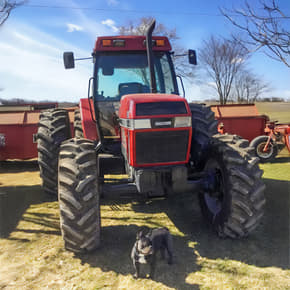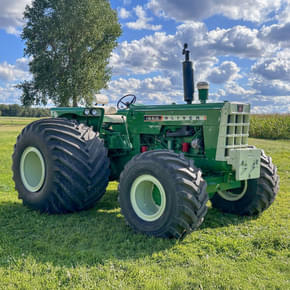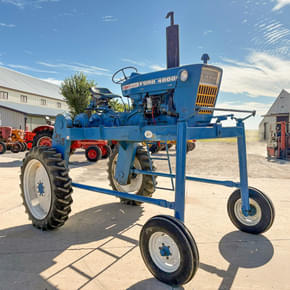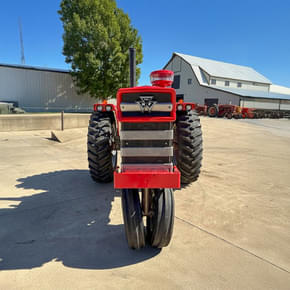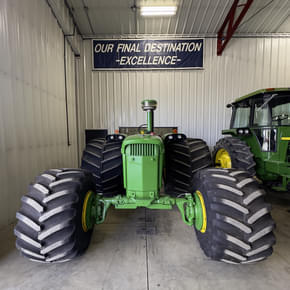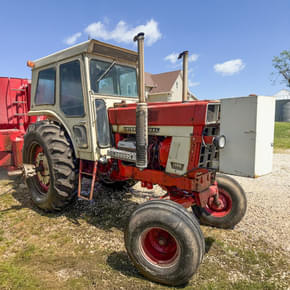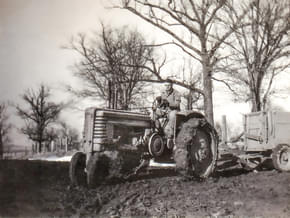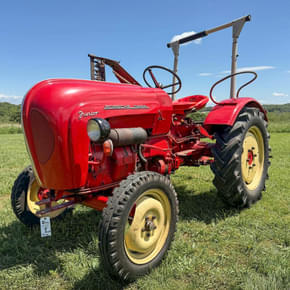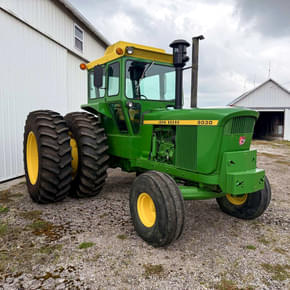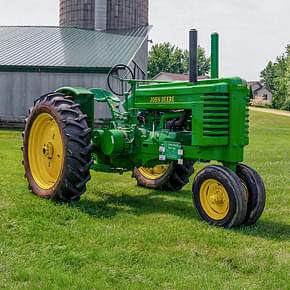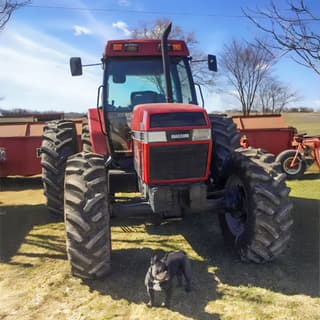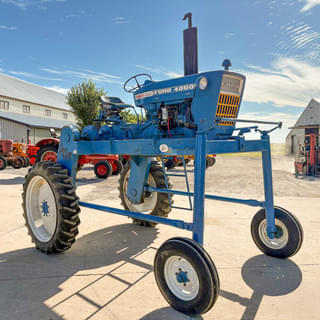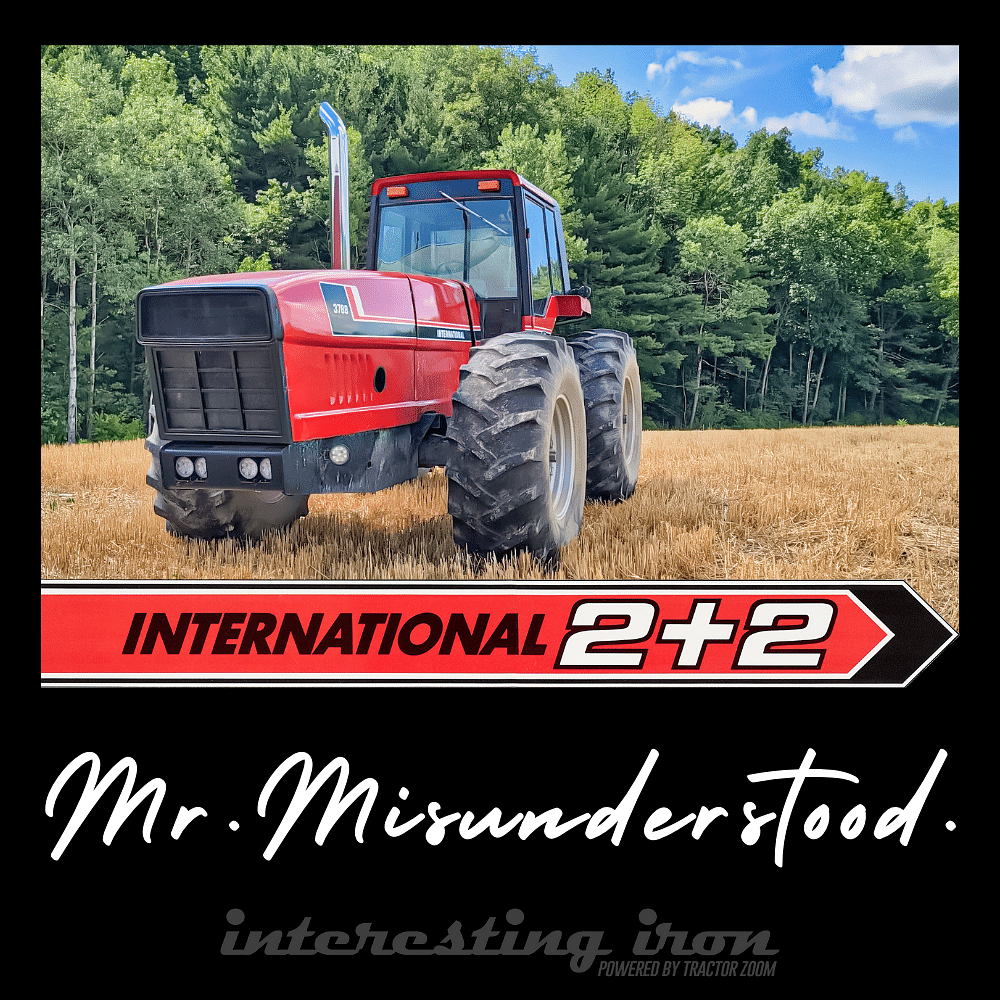
So let’s talk about the IH 2+2. I’ve been wanting to write this one for quite a while, but I needed the right tractor to be listed on Tractor Zoom. Not too long ago, our friends at Iron Listing put this 3788 from southwest New York up on the site. So…here we are.
I won’t beat around the bush here; I think the IH 2+2 tractors are the single most misunderstood machines to ever wear red paint. They really were a game-changing design, but they absolutely polarized people. Either you loved them or you thought they were the most ghastly thing you’d ever seen. There really was no in-between.
With that being said, let’s dig in.
Project TX-160
International Harvester was a player in the growing 4WD market during the 70s. Steiger was building articulated IH models for them at the time (starting with the 4366 – which is a great story, BTW), but they weren’t really setting the world on fire. Steiger, Big Bud, and Versatile seemed to own that market anyway. However, nobody was really building anything in the mid-sized market. For the row crop farmers who wanted to go bigger with implements, it was basically three options.
- Go big with a Steiger Bearcat or a Cougar and suck it up when it came time to pay for it (and fill the tank).
- Buy a front wheel assist row crop tractor and hope for the best (almost every FWA at the time was hydraulic, not mechanical).
- Throw as much weight on your 2WD as you possibly could, crank the pump wide open, and risk shelling a motor or trashing the driveline.
Nobody really had any great mid-sized options. That’s where Harvester saw an opportunity.
Thus, Project TX-160 was born.
The parameters were simple.
- Articulated.
- PTO.
- 4WD.
- Dual-friendly.
- 130/150/170 horse options.
- Mid-sized, and maneuverable in a row crop operation.
That last requirement was the kicker. Harvester was betting that if they could build a more agile 4WD in a mid-sized package, there was a market there for row-crop farmers who wanted more capability but didn’t want to size up all of their implements. Guys who could use a bigger tractor but not have it be so expensive that it had to be their only tractor.
Enter the IH 2+2.

The tractor with a thousand nicknames…
Harvester’s engineers had been kicking around a design mating the back half of one of their 2WD tractors with another gearbox/axle combo out front with a bendy bit in between the two for a few years. It would be full-time 4WD with wheels of equal size like other models – but with a twist. Their idea was that if you put the driver in the back half instead of in the middle, it’d work better in a row-crop operation. The driver would be that much closer to the business end, and could actually see what was going on at the hitch/3-point level. You couldn’t do that in a traditional square-shaped 4WD.
The 3388 and 3588 mated the back half of a 1086 with a long frame and hood housing the engine, fuel tank, and a front axle from Kimco (an offshoot of Komatsu, who was partnering with IH at the time).
After some discussion and prototyping, this is what they arrived at.
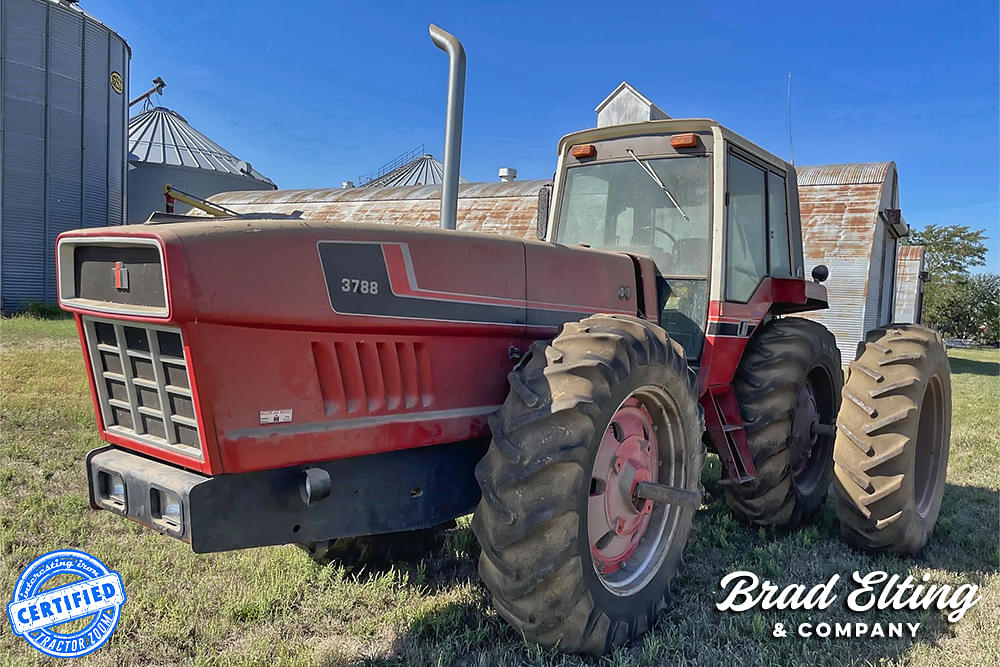
The wonkiest-looking tractor ever built.
Presenting the concept to IH’s top brass…
Yeah, it went about like you’d imagine.
According to Bud Youle (one of the TX-160 project managers), the first thing out of anybody’s mouth was, “My god, who thought up this ugly SB?” (Think about it for a second and you’ll figure out what SB stands for…)
Looks aside, though, once they saw drawings and prototypes, they felt a little better about it. At the end of the day, you can’t argue with performance – and the 2+2 had it. It didn’t lose traction. Period.
Even if it was an “ugly SB”.
So they greenlit the project, and the factory started turning out 3388s with 130 PTO horsepower, and 3588s with 150 PTO horsepower!
Why it worked…
Weight balance, that’s why.
Where the traditional 2WD row-crop tractor was sitting around 30/70 sitting still, the bias goes very heavily toward the rear when the tractor is under load – i.e. heavy tillage. When that happens, the front end gets light and the wheels come up. If you put a full rack of suitcase weights on the front, it’ll keep the nose down. However, you’ll still end up losing traction and your motor will work harder.
With the 2+2, the weight balance was 46/54. With that 54% of the weight sitting over the front wheels (engine & fuel tank), it held the front end down just great. Furthermore, when under load and the weight balance shifts backward, it allows the rear wheels to work in concert together. It rarely ever lost traction because it put more of the available power to the ground.
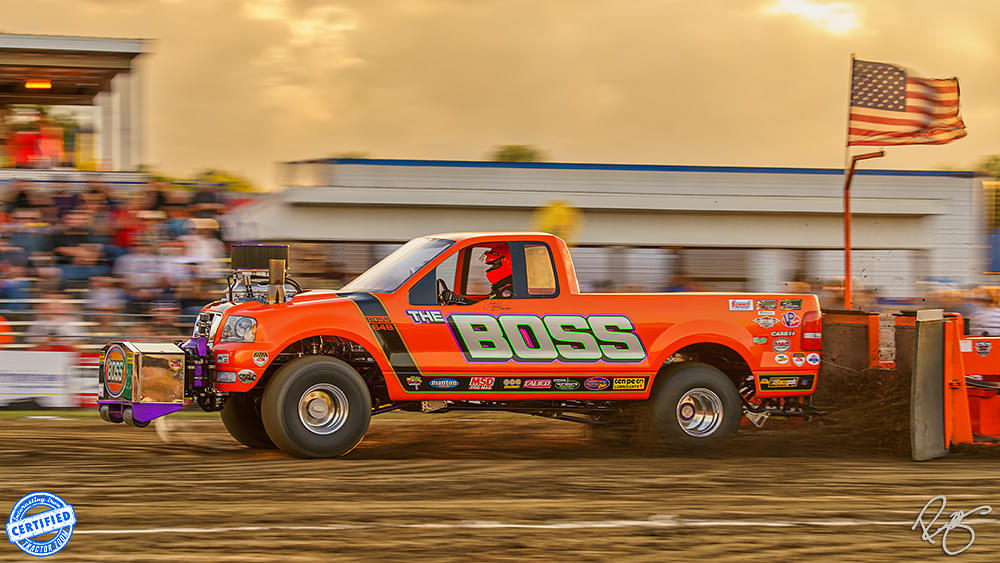
Furthermore, the turning radius was crazy-good! It could turn itself around in just under 16′ – better than some FWA row crop tractors that were available at the time. Not bad for a tractor with what has to be an 11-12′ nose!
Introducing the 33- and 3588s to America
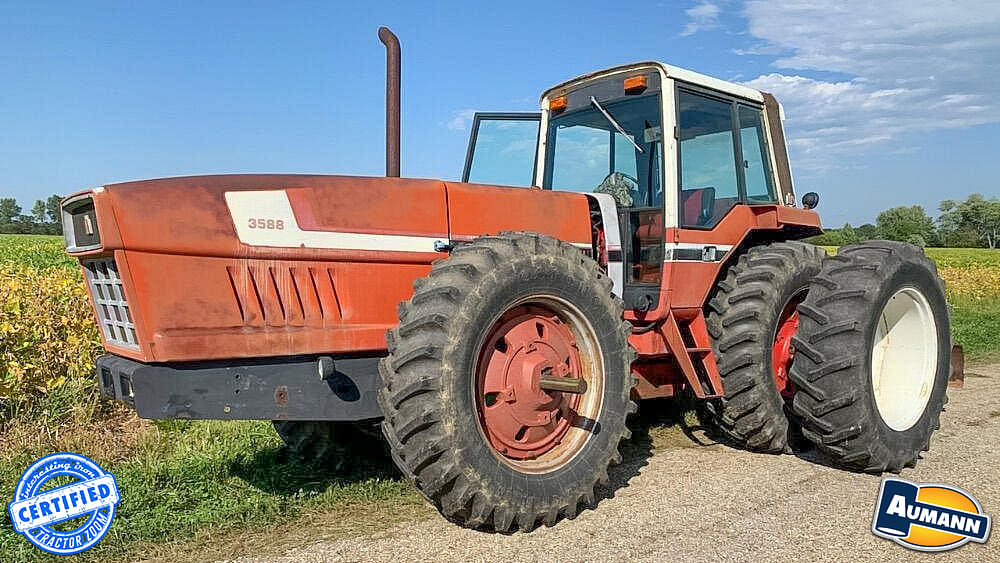
To their credit, Harvester knew that the 2+2 wouldn’t sell itself on looks alone. They knew that if the Anteater was going to sell, people were going to need to see it in action – and if at all possible, drive it.
So that’s what they did.
The 3388 and 3588 launched in January 1979 as part of the Red Power Showdown at a big to-do down in Phoenix at the Dick Van Dyke Studios. Harvester flew dealers in by groups – starting with the Delta region. And as expected, there was no middle ground as far as what they thought of it from a looks perspective. But, when they saw it outwork a tuned-up 4840 in the field, they started to come around pretty fast. Furthermore, when they found out you could hang saddle tanks off the sides, that sealed the deal. The dealers knew they had a machine they could sell (and they did)!

The Red Power Showdown Demo Days
For IH, the way they introduced the 2+2 to dealers worked pretty well, and it became sort of a rinse and repeat procedure. They ran the Red Power Showdown road show all over the continent, and when farmers saw a 150-horse tractor outpulling and outworking a 200-horse 2WD row-crop tractor, they were impressed. Even if it didn’t look like something they were used to, it sure got the job done!
Eventually, farmers started to come around. Even if the tractor had a lot of unflattering nicknames (Anteater, Snoopy, and Landshark were probably the most popular), the IH 2+2s were selling. Not like the 1066 or the 4440 were selling, but Harvester was moving units.
The 3788
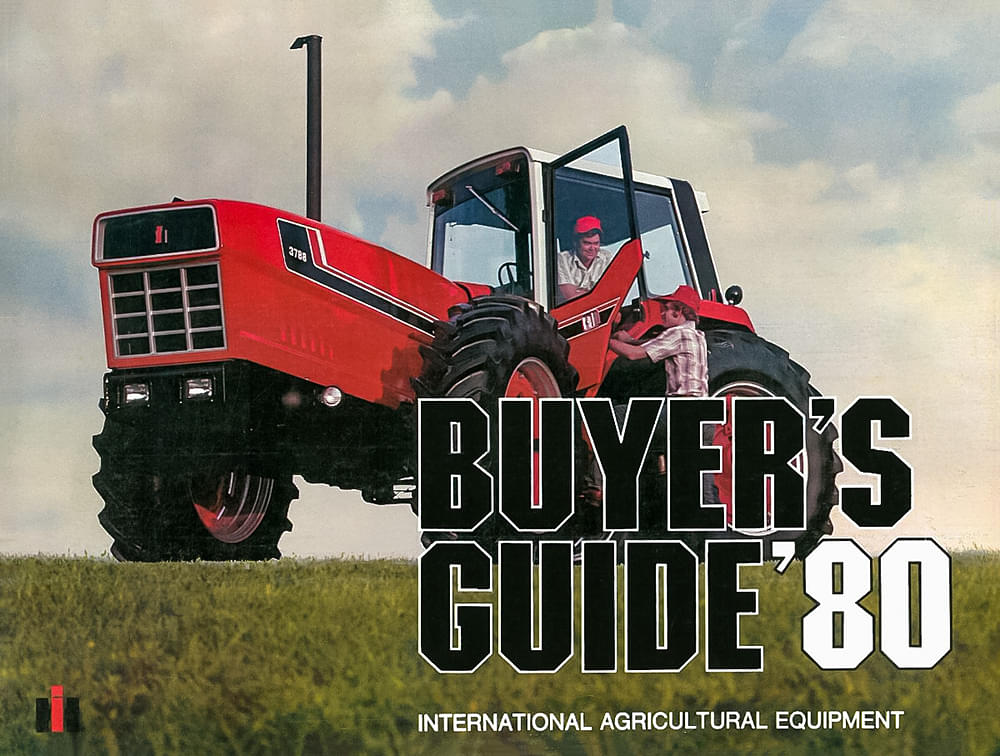
The 3788 was announced a year later. It was the big one in the lineup, and used the back half of the 1586 instead of the 1086. The engineers turned up the wick a little on the DT466B so it made 170 PTO horsepower.
One other thing that was different on the 3788 was the transmission. With the 1586, the transmission was a 12-speed (the two smaller siblings were 16-speed), and it didn’t have the top-end speed for road travel. Furthermore, some farmers felt that the spacing was too far apart, so they were always hunting for gears.
Despite that limitation, and being the model in production for the least amount of time (2 years, as opposed to 3 for every other model), the 3788 was still the second best-seller out of all of the IH 2+2 tractors. Production was somewhere in the 2500-unit range.
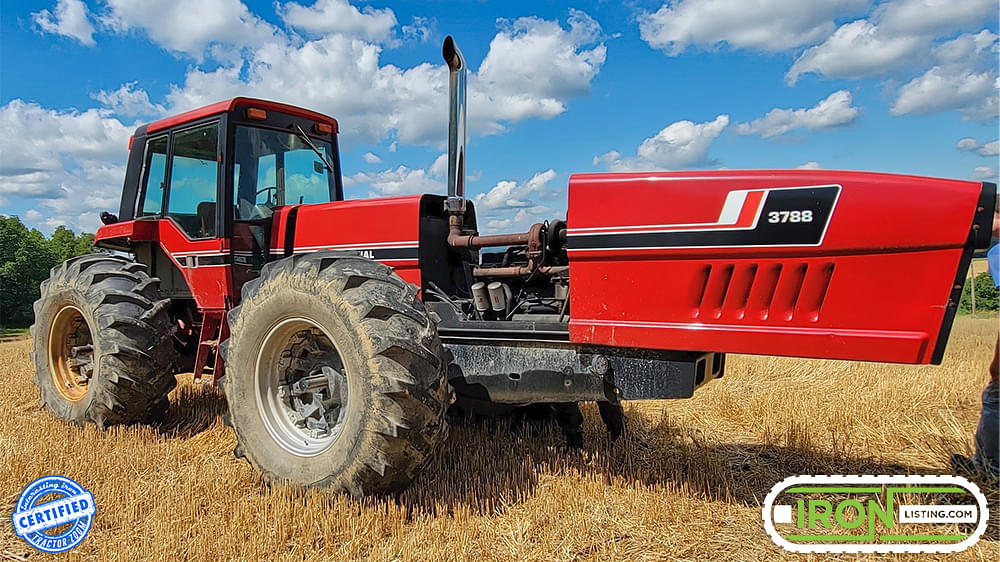
The 60-series 2+2s
The 6388, 6588, and 6788 were released in 1981, and would remain in production until 1984. For the most part, aside from a slight horsepower bump (about 10-12 horse, depending on the model), the new models were just a cosmetic refresh. The tractors got a new paint scheme and a black grill insert (mainly to maintain visual similarity to the 50-series row crop tractors), and I believe they relocated the shifters to the right-hand side of the cab.
At one time, Harvester had planned on incorporating the new STS transmission into the 60-series 2+2s, but ran into some issues during testing in the full-time 4WD platform. Nobody was happy about releasing a second generation of the tractors with technology that was nearing a decade old, but they weren’t willing to risk market share by releasing technology that wasn’t fully tested. They’d been bitten by that before with the 460/560/660 models (I wrote a column about that ordeal).
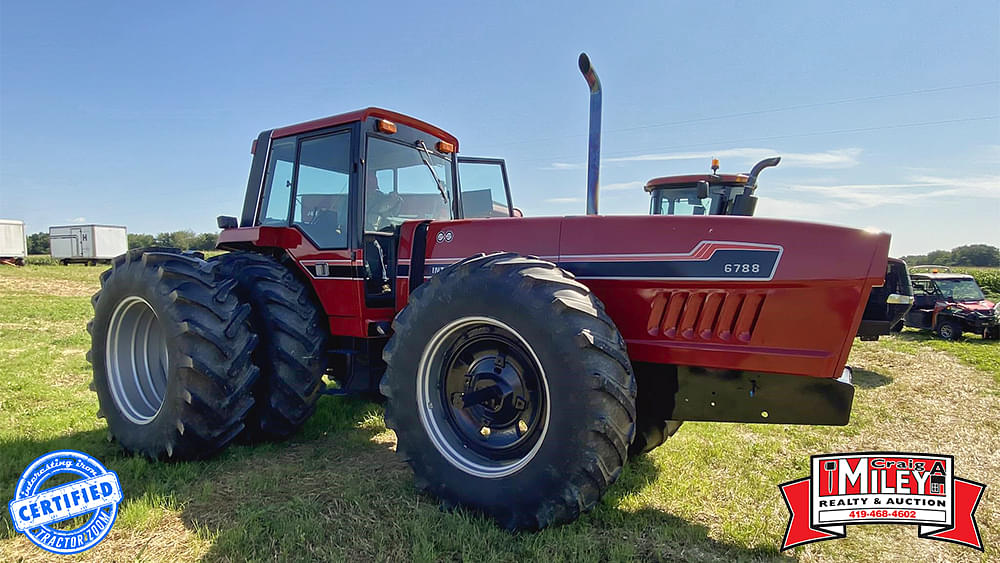
Sadly, by 1981 when the 60-series was launched, the Farm Crisis was ramping up, and Harvester was in a very precarious financial position. As such, they didn’t make many. According to published numbers, they only built 1261 across all three models.
Interestingly enough, though, the company did have one more trick up their sleeve with the 2+2…
Enter the Super 70s.
The Super 70s: The Ultimate 2+2
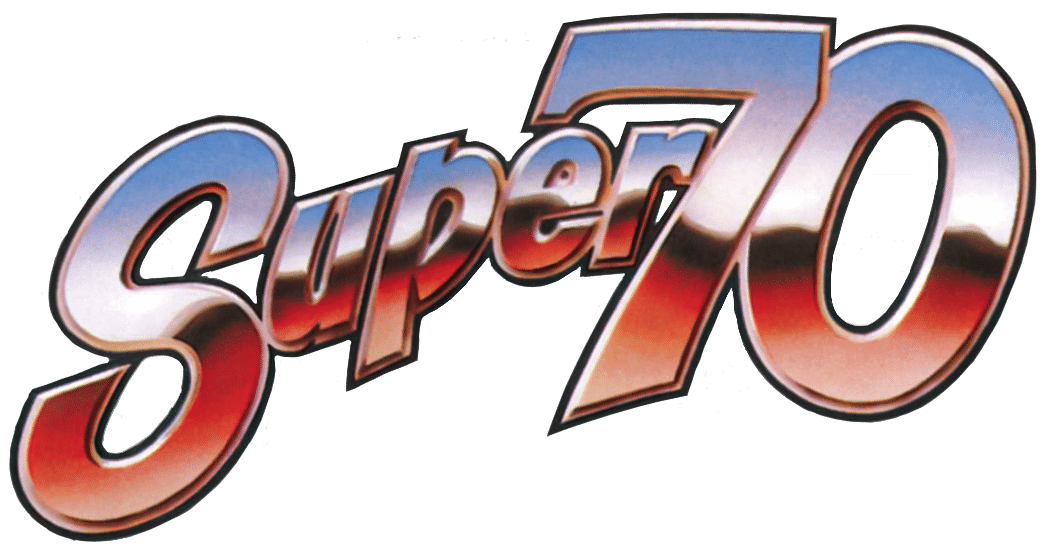
While the Super 70s weren’t a completely new design, they may as well have been. They were the most advanced version of the IH 2+2 ever to come from the factory. Both models got power from a turbocharged and intercooled DTI466C, the latest and greatest version of the venerable 466. As with previous generations of the tractor, they used the back halves of existing tractors. The 7288 used the back half of the 5288 and made 175 PTO horsepower. The 7488 used the back half of the 5488 and cranked out 200 PTO horsepower. Both models used a heavy duty front axle sourced from RABA in Europe. A modified and computer-controlled version of the 18-speed STS (Synchro Tri-Six) powershift transmission was finally ready for prime time, and both tractors got it. There were plans to build a 7688 and 7888 but neither one ever made it to production.
Sadly, they didn’t make many of ’em. Harvester had initially approved an order of 36 7288s in January 1985, but when Tenneco signed the paperwork to buy IH and merge them with Case, the Super 70s were axed almost immediately. There are lots of opinions about how and why that happened, but at the end of the day, it was what it was. No more Super Snoopies.
As far as published numbers go, there were 19 7288s built and 16 7488s (all of which are still present and accounted-for). I’m told that when the orders were given to kill off production, though, there were a few tractors on the assembly line that were destroyed. It’s a shame, too, because these were truly beautiful machines, in my opinion. Truly modern in design, well-appointed and comfortable inside, and they were built for business!
These days, when a Super 70 comes up for sale or auction, it’s a big deal, and they go for huge money!
Was the IH 2+2 a failure?
And if so, why?
I’ve wrestled with this question for a week or so, and I don’t know that I’ve reached a good answer. I mean, if we’re looking at total production (around 13,000), that puts it in the same territory as the John Deere 4840. I don’t know anybody who thinks the 4840 was a flop…do you? Heck, I know a guy down in MO who farms over 2500 acres with a pair of 4840s as his big horses!
On the other hand, though, time hasn’t been kind to the IH 2+2. They get a bad reputation for a couple of reasons.
Polarizing design
On one hand – and we’ve discussed this – they were really polarizing. They were massively different compared to what was being sold by Steiger, Versatile, Deere, and others. That’s a bold move in any industry, but it’s even more bold when it’s in the ag machinery industry because on the whole, farmers don’t necessarily go for what’s advertised as the latest and greatest – and especially not when it looks like that.
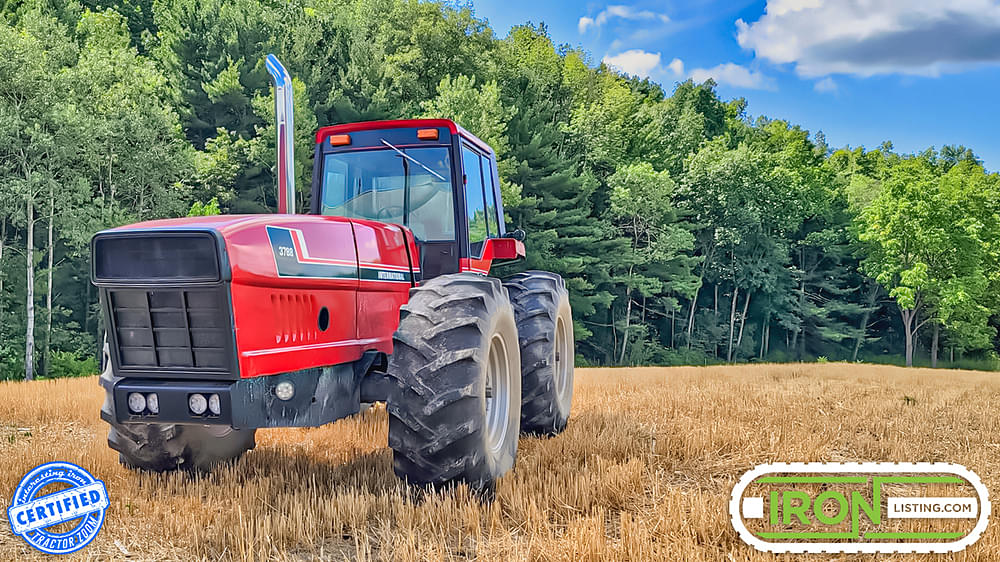
Instant BTO status = broken machines
Once they did start to catch on, farmers bought them thinking that they could weight up and crank the pump screw wide open and become an instant BTO. News flash…that ain’t the way it works, and it’s not the way Harvester designed them. 2+2s are not baby Big Buds!
In fact, it was almost exactly the opposite.
They were built so that the farmer could have the benefits of less compaction, better traction, and more agility with the equipment they already had – not so that they could buy bigger stuff that really should’ve been pulled with a big 4WD in the first place. If you used a 2+2 the way it was meant to be used, it had the capability of lowering your bottom line because you were more efficient. Compared to a weighted-up, fuel pump wide open 2WD, you didn’t work your machine as hard during heavy tillage or planting. Furthermore, because you weren’t fighting for traction, you used less fuel and moved through the field faster, which saved you time!
Sadly, that’s not how many of these tractors were used. The whole “instant BTO” mindset contributed to a lot of wrecked drivelines, blown motors, and worse. I mean, if you look in the owner’s manual for the 33- and 3588s, they didn’t even have a front axle that was rated for front duals. That was not a mistake – that was on purpose.
Editorial footnote:
I don’t completely blame the farmer for all of that last portion. I feel like the dealers probably contributed to this to a certain degree. Sometimes sales guys might oversell a machine’s capabilities a little bit in order to reel in a sale…allegedly.
C’mon, who are we kidding? That’s happened since the dawn of time.
I’m 100% positive that more than one farmer bought 2+2s because a sales guy promised the moon. The second he got it home, he filled the tires, turned up the screw, and ran it like a race car…because the sales guy promised him that it was the toughest thing to ever wear red paint.
The one in New York
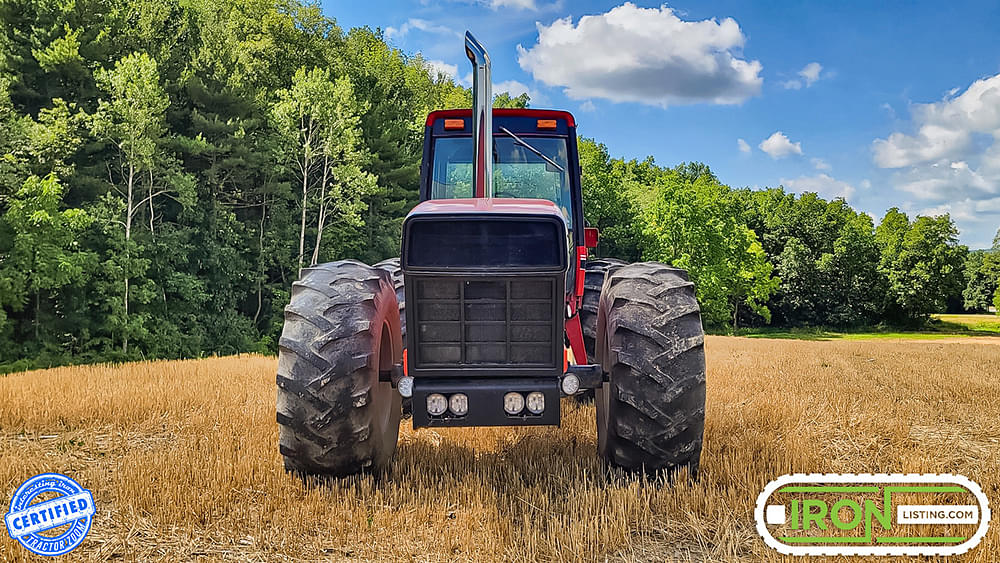
As for the one up in New York? I talked to Mary Smith at Iron Listing this morning about it. She told me that the farmer who owns it now (she’s consigning it for them) has had it for 5-6 years, and he’s put effort into fixing it up. If you look at the listing, you’ll see that it’s not pristine, but it is in pretty good shape. They’ve used it in their cattle operation during the winters over the past few years, but they’ve decided to move on to something else to fill that role on the farm.
It definitely needs new rubber (especially on the front), it’s missing the bellows for the pivot, and the hour meter is broken, but other than that, it’s actually in pretty good shape. The sheet metal is fairly clean, and it’s been recently repainted similar to a 6788 with some mild custom touches (the black grill surround, for one). It’s got a fairly fresh cab kit in it, and it runs and drives as it should. A lot of the lighting has also been upgraded to LEDs, which is definitely an improvement over the factory halogens.
If you’re interested, I’m sure Mary can get you in touch with the sellers. Her contact info is in the listing on TZ!
Wrapping up
I’d be lying if I said I didn’t have a soft spot for IH 2+2s. I grew up across the street from a farmer who had one. If I had to guess, it was probably a 3588; I can’t remember for sure. Every so often he’d take me for a ride in his tractor when I was a little kid. It was the biggest tractor I’d ever ridden in, and I thought it was the coolest thing in the world! I’ve always wondered where it ended up when he passed away in 1994.
Today, you don’t see these tractors crossing the auction block or on dealer lots. When you do, they’ve often seen better days. The real trick is finding one that isn’t beaten to death. They’re out there, but they’re few and far between. Collectors are beginning to scoop up the nice ones. I think we’ll continue to see that as more show up in the marketplace, too. For tractors like the 2+2, you’ll definitely want to see maintenance records. It’s not a tractor to buy sight unseen.
At the end of the day, these tractors really were misunderstood. Many farmers didn’t like it just because how it looked, regardless of performance. Others saw it as a cheap(er) means to grow, and as such, they worked ’em hard doing stuff that the tractor never was intended to do.
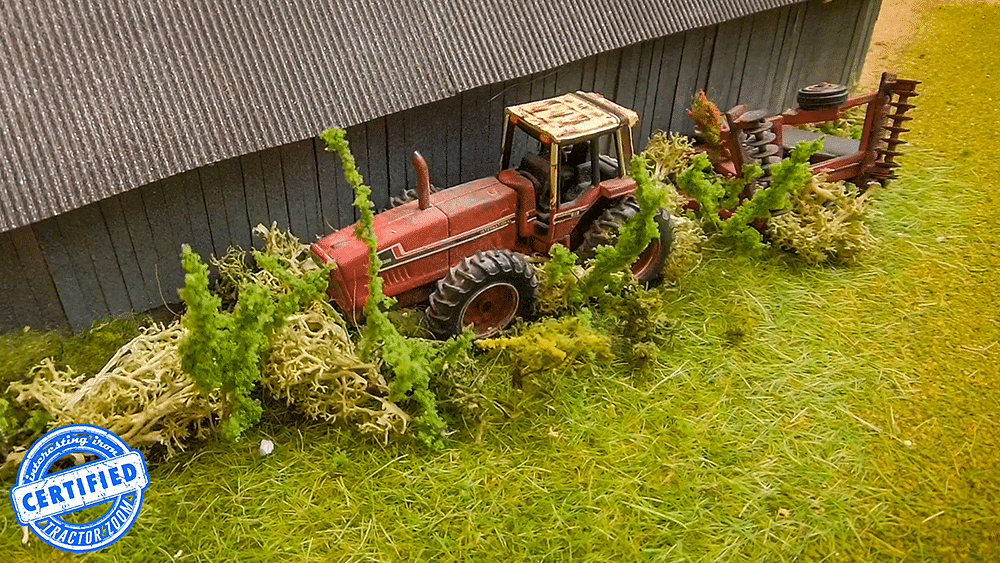
But for the ones that could look past the appearance, the IH 2+2 was a heck of a good machine!
Related stuff worth checking out…
- A great interview with Ron Birkey about why the IH 2+2 was so successful in Illinois and why Birkey’s Farm Store sold more than of these tractors than just about anybody else on the planet.
- An excerpt from Red Tractors 1958-2022 about the state of Harvester’s financial position in the early 80s. It really wasn’t good. (If you’re a red tractor fan and you haven’t bought this book yet, you really need to. It’s a fascinating look at the history of the company.)
- The other half of the Bud Youle interview about the IH 2+2.
- Ken Updike wrote a great article about the Super 70 models for the Sept./Oct. 2022 edition of Heritage Iron. Lots of great information in this one. Pick it up here.

